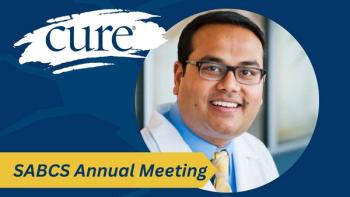
Cancer and Ostomies: A World Ostomy Day Perspective
A bladder cancer survivor discusses the importance of World Ostomy Day and shares her own ostomy story.
World Ostomy Day happens this year. It is October 2nd. World Ostomy Day only happens every three years, and it is a massive effort of the International Ostomy Association and its affiliated organizations to execute a theme globally. In the U.S., we are more fortunate and have an active organization that does a National Ostomy Awareness Day annually. Both awareness efforts are made on the first Saturday in October.
As a bladder cancer survivor, I have the distinct pleasure to be in two different support circles – cancer and ostomy circles. Cancer is a leading reason that a person can need an ostomy, and yet, neither of the communities talks about either experience.
I am active in bladder cancer, general cancer and adolescent and young adult (AYA) cancer communities on the cancer side of things. I currently work for an oncology organization. The topic of ostomies occasionally comes up, but it is not discussed thoroughly.
In the ostomy spheres, I am the president of my local affiliated support group (ASG) and am active on the national level with the United Ostomy Associations of America (UOAA). Cancer is rarely a topic that is discussed in depth there.
I am a writer and write for several sites, including my blog. I always find it interesting that even among some of the most popular advocates with many followers on social media, many tend to talk about either ostomies or cancer almost exclusively.
However, these two topics are not exclusive to each other! Cancer is a leading cause of ostomy surgery. Colorectal and bladder cancer are probably the most common, but any digestive or urinary or reproductive cancers can lead to the necessity of ostomy surgery.
Ostomies are a type of external fecal or urinary diversion. They can be temporary or permanent. In the U.S. alone, there are usually around 100,000 ostomy surgeries annually. At any time, estimates run between 750,000 and 1,000,000 ostomates living in the U.S.
I recently saw a statistic for a European country that said one in 500 people have an ostomy. I did the math at the time, and if that held for the entire planet, approximately 15.6 million people worldwide are ostomates!
The chances are that you know someone with an ostomy and don’t even know it.
Every year, I take the entire month of October to share my story and raise awareness about ostomies. A lot of people still hold a lot of outdated stereotypes about ostomies and ostomates. While some of them may have been true once, the advances made in the field over the past 20-30 years have rendered them as useless as an urban legend.
I meet people in groups all the time that think that their lives are over just because they have to have ostomy surgery. THIS IDEA IS FALSE!
If anything, having my ostomy has returned the gift of life to me. Since I have gotten my ostomy, I have traveled by plane, train, boat and automobile without incidence of any kind. I swim, dance, walk, hike and drive. Everything that someone can do without an ostomy, a person can do WITH an ostomy.
Yes, there are some things I do differently. Yes, there are some things I have not done or cannot do since my surgery, but those things are few and far between. Plus, most of them have nothing to do with my ostomy but are, in fact, a result of other medical issues that have lingered from the effects of chemo or that have developed since treatment. I have even switched careers since having my ostomy.
I do not hide the fact that I have survived bladder cancer. I do not hide the fact that I live with a urostomy, a medical device for collecting urine, either. I don’t hide those facts from anyone. None of us should have to!
I am proud that I survived, although neither my urology oncology surgeon nor my oncologist thought I would. My ostomy saved my life. I am grateful. To me, life with an ostomy is no different than someone who must use a glucometer or has a pacemaker. An ostomy is a medical device that allows me to live.
I challenge you this year for World Ostomy Day to share your story. Step outside of your comfort zone and speak up and out about living with an ostomy. Share your story so that the people that come behind us do not have to climb a mountain as huge as ours was.
For more news on cancer updates, research and education, don’t forget to





